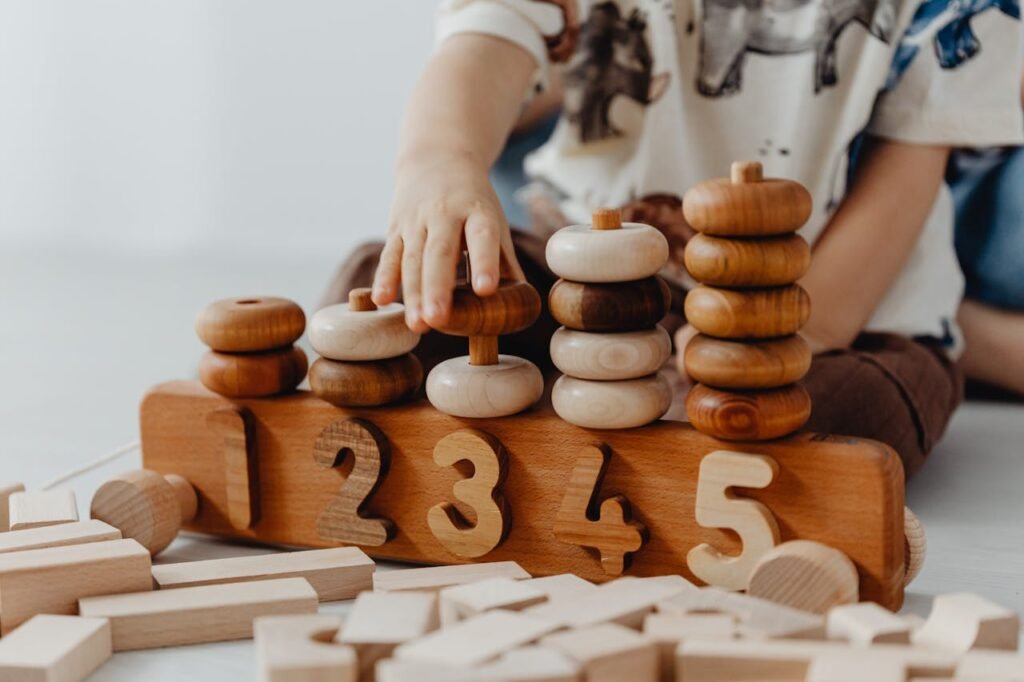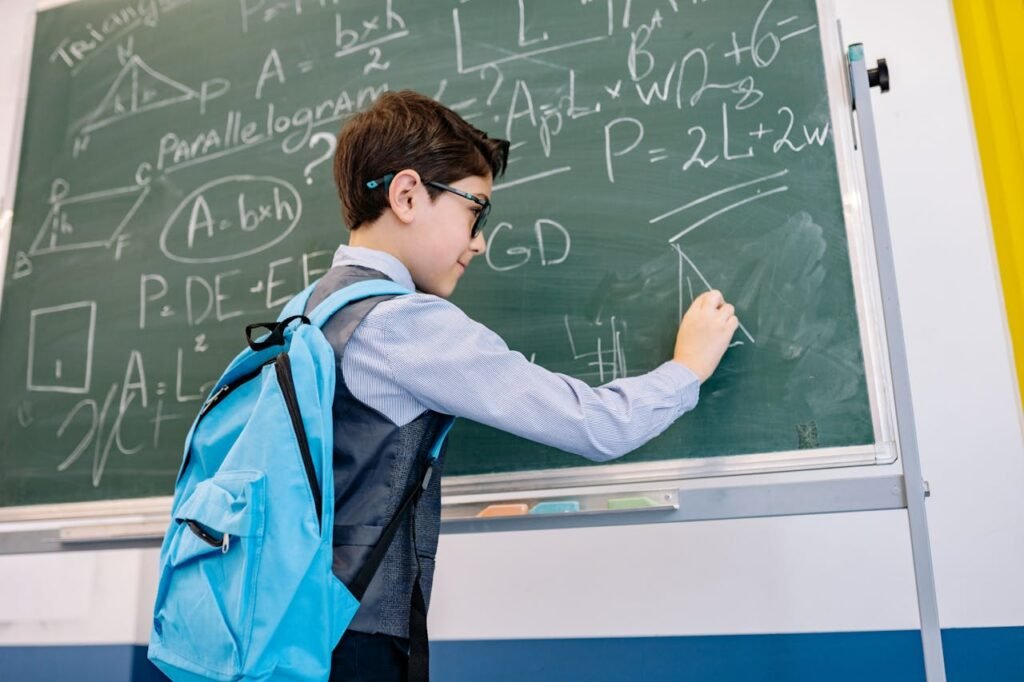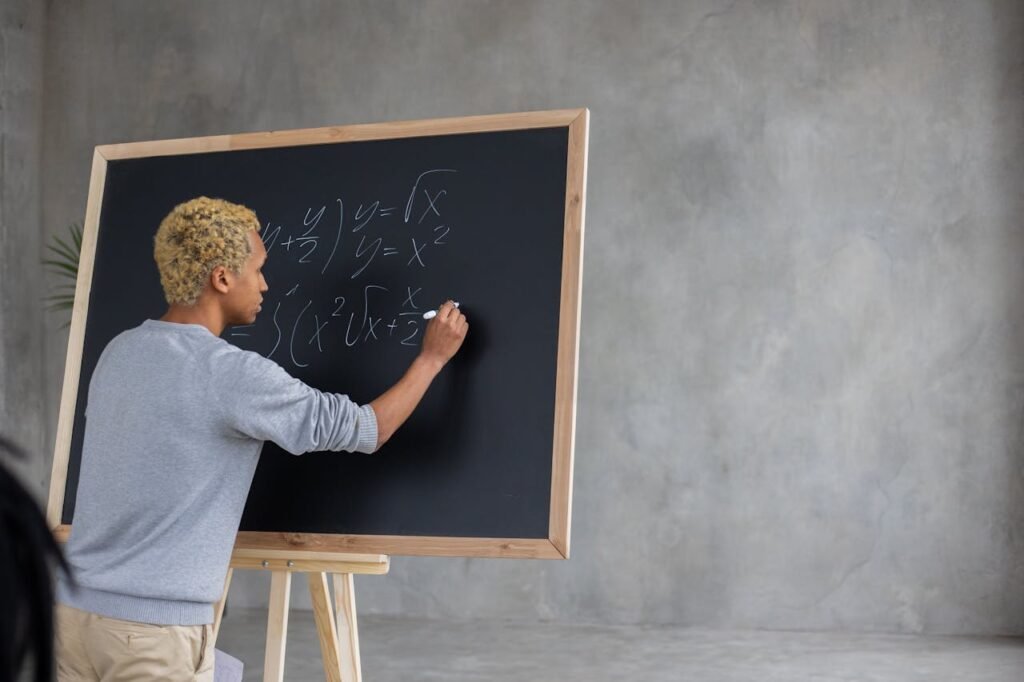For many children, math word problems feel like little traps. They read the question once, twice, maybe even three times, but still don’t know where to start. It’s not that they can’t do the math—it’s that all the words and numbers get jumbled together in their head.
This is where graphic organizers come in. Think of them as a “map” for the mind. They take the messy, mixed-up details in a problem and lay them out neatly, so the path to the answer becomes clear.
Graphic organizers work for all ages, whether a child is just learning basic addition or tackling multi-step algebra problems. They break the problem into small, simple parts, and guide the student step-by-step until the solution appears.
Why Word Problems Are So Hard for Students
At first glance, a math word problem is just a small story with a question at the end. But for many students, it’s much harder than a page of plain numbers. That’s because solving it requires two skills at the same time—understanding the story and then doing the math.
If either of those skills is shaky, the whole problem feels like a wall they can’t climb.
1. Too Many Words, Too Few Clues
Some word problems are packed with extra details that don’t actually matter. For a child, finding the important numbers and ignoring the rest can feel like looking for a tiny key in a messy room.
Example:
“Liam has 14 red apples, 7 green apples, and a new red basket. He gives 5 apples to his friend. How many apples does he have left?”
The extra detail about the “red basket” is just decoration—it’s not needed to solve the problem. But it can still distract a student who’s trying to figure out what’s important.
2. Confusing Language
Words like fewer, altogether, remain, and difference might be easy for adults, but they can puzzle younger learners. And sometimes, even older students misunderstand them.
Example:
If the problem says, “How many more apples does Sam have than Mia?” a child might mistakenly add the two amounts instead of subtracting them.
3. Multi-Step Problems
Some problems don’t have just one step—they have two, three, or even more. The student has to keep track of the numbers changing after each step. Without a clear plan, they might mix up the order of operations or forget a part entirely.
Example:
“A train has 120 passengers. At the first stop, 45 get off and 20 get on. At the second stop, 35 get off. How many passengers are left?”
Here, there are three changes to track in the correct order.
4. Pressure and Panic
In a test, the pressure of time can make a child rush through the reading part and miss key details. Sometimes, they start guessing instead of solving. Over time, this can create a habit of avoiding word problems altogether.
What Are Graphic Organizers and Why They Work in Math

A graphic organizer is a simple but powerful tool that turns messy information into a clear, visual plan. Instead of holding all the numbers, words, and steps in your head, you put them into shapes, boxes, or diagrams that show exactly how they connect.
If you’ve ever made a grocery list before shopping, you’ve already used a form of a graphic organizer—you grouped and wrote things down so you wouldn’t forget or get lost in the store. Math graphic organizers do the same for word problems.
In Math, They Act Like a Road Map
When you give a child a word problem without structure, it’s like dropping them in a forest with no path. They might wander in the wrong direction, go in circles, or get stuck in one spot.
A graphic organizer acts like a map with signs:
- Start here: Write down the important information.
- Follow this path: Decide which operation comes first.
- End here: Arrive at the final answer.
By laying out the steps, the organizer removes the fear of “What do I do next?” and replaces it with “I know exactly where I’m going.”
They Work for All Ages
One of the best things about graphic organizers is how adaptable they are.
- For younger students, the organizer might be a set of three big boxes labeled Start, Change, and Answer. If the problem says “Ben had 5 apples and bought 3 more,” the Start box gets 5, the Change box gets +3, and the Answer box gets 8.
- For older students, the organizer can be more complex—bar diagrams for ratios, flow charts for multi-step problems, or even comparison charts for “How many more?” situations.
This flexibility means a child can use organizers throughout their school years, with the design evolving as the math becomes more advanced.
Why They’re So Effective in Math Word Problems
1. They Make the Problem Less Scary
A long, wordy problem can make even a confident student hesitate. But once the numbers and key details are placed into a diagram, the problem no longer looks like a wall—it looks like a small set of easy steps.
Example: Instead of reading, “Sarah baked 12 muffins, gave 4 to her neighbor, and then baked 6 more,” and trying to solve it in her head, a student can fill in three boxes in a sequence chart: 12 → -4 → +6.
2. They Prevent Mistakes
Many math errors happen because students skip a step or do steps in the wrong order. A graphic organizer physically separates each step, making it clear what comes first and what comes next.
Example: In a two-step problem, subtraction might come before addition. Without an organizer, a child might add first by mistake. With an organizer, the order is clearly shown.
3. They Build Good Habits
When students use graphic organizers regularly, they train their brain to automatically break problems into parts—even when they’re not drawing an organizer. This is a valuable lifelong skill.
Example: Later in life, they might use the same “break it into steps” approach to plan a project, budget money, or organize information for an essay.
Different Types of Graphic Organizers for Math Word Problems

There’s no single “best” graphic organizer for every math problem. The best choice depends on the type of problem and the child’s learning style. Some organizers are perfect for simple addition and subtraction, while others work better for multi-step or comparison problems.
Here are the most useful types and how they can be used.
1. Part–Whole Diagrams
What they are:
These diagrams show one large box or circle representing the “whole” and smaller boxes or circles representing the “parts.”
When to use them:
They are ideal for addition and subtraction problems where you know some of the parts and need to find the missing part or the whole.
Example:
“Liam has 12 marbles. His friend gives him 8 more. How many does he have now?”
The diagram shows:
- Part 1 = 12
- Part 2 = 8
- Whole = ?
The student adds the parts to find the whole: 12 + 8 = 20.
Why it works:
It helps children see that addition combines parts into a whole, while subtraction finds a missing part.
2. Comparison Charts
What they are:
A chart with two columns, one for each item being compared, and a space to note the difference.
When to use them:
They work well for “How many more?” or “How many fewer?” problems.
Example:
“Mia has 15 stickers. Jack has 9 stickers. How many more does Mia have than Jack?”
The chart:
- Mia: 15
- Jack: 9
- Difference: ?
The student subtracts: 15 – 9 = 6.
Why it works:
It clearly separates the two amounts so the child can focus on comparing them, rather than mixing up which number is bigger or smaller.
3. Sequence Charts
What they are:
A series of boxes connected by arrows, showing the order of steps.
When to use them:
They are perfect for multi-step problems where events happen one after the other.
Example:
“A shop has 200 apples. It sells 45 in the morning, buys 30 more in the afternoon, and sells another 25 in the evening. How many are left?”
The chart:
- Start: 200
- Step 1: 200 – 45 = 155
- Step 2: 155 + 30 = 185
- Step 3: 185 – 25 = 160
Why it works:
It keeps the order of steps clear so the student doesn’t skip or mix them up.
4. Bar Models
What they are:
Rectangular bars that visually represent quantities, used heavily in Singapore Math. The lengths of the bars show how numbers relate to each other.
When to use them:
They’re great for ratio, proportion, or problems where the relationship between quantities matters.
Example:
“Tom has twice as many pencils as Anna. Together, they have 30 pencils. How many does Tom have?”
Draw a bar for Anna (1 part) and a bar for Tom (2 parts). Together, they make 3 equal parts.
- 3 parts = 30 pencils
- 1 part = 10 pencils
- Tom (2 parts) = 20 pencils
Why it works:
It makes abstract relationships concrete and visible.
How Debsie Uses Graphic Organizers in Online Math Lessons

At Debsie, graphic organizers are not an “extra.” They are part of how we teach thinking. We use them to slow the problem down, show the steps, and help a child feel calm and in control. Below is how this looks in a real class, point by point.
1) Live, Interactive Drawing (We build the map together)
In every session, the teacher opens a shared whiteboard. The child can draw on it too—boxes, bars, arrows, labels. We do not hand over a finished diagram. We build it with the child.
Why this matters:
When a student draws the organizer themselves, they are not just copying. They are choosing what goes where. That choice is the first step to real understanding.
What it looks like in class:
- Teacher: “What do we know for sure? Let’s put that in the first box.”
- Student types: “Start = 120.”
- Teacher: “Great. What happens first? Off or on?”
- Student circles “off,” writes “–45” in the next box.
By the end, the child has a clear chain of boxes (or a clean bar model) that they made. That sense of ownership makes a big difference when they try the next problem on their own.
Home tip: Ask your child to “teach back” by redrawing the organizer on paper and walking you through it in their own words.
2) Guided Filling (We prompt thinking, not guessing)
We do not rush to the answer. We guide the child to place each fact in the right place and to name the action (add, subtract, compare, share, multiply).
How we guide without giving it away:
- “Which number is the total? Which numbers are parts?”
- “Is this a change up or a change down?”
- “What must come first? Why?”
- “Can we show that with an arrow?”
This keeps the child thinking, not guessing. It also lowers anxiety. There is always a next question to answer, a next box to fill. No more staring at a blank page.
What changes over time:
At first, the teacher asks many prompts. Later, the child starts asking themselves the same questions. That is the moment we know independence is growing.
3) A Toolkit of Organizers (We pick the right tool for the job)
We do not force one diagram for every problem. We pick a design that fits the story.
- Part–Whole for joins and splits (add/subtract).
- Comparison for “how many more/fewer.”
- Sequence for “first… then… finally…” stories.
- Bar models for ratios, totals-with-gaps, and multi-step word problems.
How choice helps:
When children learn several organizer types, they stop feeling stuck. If one diagram feels messy, they try another. This builds flexible thinking—just like a good toolbox helps a builder fix more things.
In practice:
A student starts with a sequence chart. Midway they notice it’s really a comparison question. They switch to a comparison chart and finish with ease. The diagram serves the thinking, not the other way around.
4) Real-Life Problem Practice (We make it feel useful, not abstract)

We bring in problems that feel real—budgeting a class party, planning a trip, tracking scores, sharing snacks, comparing sale prices.
Why we do this:
When the story feels real, the organizer feels natural. Kids see why order matters, why we mark “+” or “–”, why we label the bars. It stops being “math for the test” and becomes “math for life.”
Sample class activity:
Market Math. Students role‑play buying items with a set budget. Each purchase is a “step” in a sequence chart. Discounts become “differences” in a comparison chart. At checkout, they explain their diagram aloud:
- “I started with ₹500. First I spent ₹180, then I saved ₹50 with a coupon, then I bought fruit for ₹120. My organizer shows 500 → 320 → 370 → 250. Final balance: ₹250.”
What improves:
- Order of operations.
- Clear labeling (units, totals, parts).
- Speaking skills—kids learn to justify each step.
5) Feedback Loops and Error Fixing (We use the organizer to spot and repair mistakes)
When an answer is off, we don’t say, “Wrong.” We go back to the diagram.
The routine:
- Check labels: Is “whole” really the total?
- Check signs: Should that step be + or –?
- Check order: Did we jump ahead?
- Check units: Are we mixing rupees with items or minutes with hours?
Children learn to audit their own work using the organizer as a checklist. This habit reduces “careless” errors more than any extra drill ever could.
6) From Support to Independence (We fade the scaffold)
Our goal is not that a child needs a full organizer forever. It is that they can use one when a problem looks heavy—and know which one to pick.
How we fade:
- Week 1: Teacher builds the organizer with the class.
- Week 2: Child chooses the organizer; teacher prompts.
- Week 3: Child builds it alone, then explains.
- Week 4: Child solves some problems with only quick “mini-sketches.”
By the end, they may draw just two bars or three quick boxes—enough to clear their thinking—then solve with confidence.
7) Family-Friendly Extras (So progress continues at home)
We share simple printable templates (part–whole, comparison, sequence, bar model) and a tiny 5‑minute daily routine: read, choose the organizer, sketch, solve, explain in one sentence. No fancy tools needed—just a pencil and paper.
Parent script you can use:
- “Show me your start box.”
- “Which change happens first? Mark it.”
- “Point to your final answer and read the question again. Does it match?”
This keeps the tone calm and supportive. Your child feels guided, not judged.
Long-Term Benefits of Using Graphic Organizers for Math

Once children learn to solve word problems with graphic organizers, the benefits stretch far beyond math class. They gain habits, thinking skills, and confidence that last for years—and often transfer to many other subjects and real-life situations.
Here’s how.
1) Better Problem-Solving Skills
When a child learns to break a big, messy problem into smaller, clear steps, they’re not just learning math—they’re learning how to think like a problem solver.
- In math, they can turn a paragraph into a neat diagram and solve it.
- In science, they can break down an experiment into clear steps.
- In daily life, they can plan a birthday party budget or divide chores logically.
At Debsie, we see children start applying organizer thinking to all kinds of challenges, because they now know every problem has a structure—they just need to find it.
2) Stronger Logical Thinking
Graphic organizers force the brain to work in a sequence: “First this, then this, then that.” Over time, this strengthens logical reasoning.
For example, a student who used to jump to an answer now asks:
- “What information do I have?”
- “What do I still need to find?”
- “What’s the next step?”
This kind of ordered thinking is valuable not just for math but also for coding, science projects, writing essays, and even making decisions in daily life.
3) Reduced Test Anxiety
Many children panic in tests because they don’t know where to start. A graphic organizer gives them an instant first step: draw the diagram.
This simple action:
- Calms the mind (no more staring at the paper, frozen).
- Creates a plan they can follow without guessing.
- Helps them find mistakes before handing in their paper.
We’ve had parents at Debsie tell us their child went from “crying before every math test” to “smiling because they knew how to start every question.”
4) Independence in Learning
With regular practice, children stop relying on teachers or parents for every problem. They can pick the right organizer, fill it in, and solve the problem on their own.
This independence is incredibly important because:
- It builds self-confidence—children start to believe “I can figure things out myself.”
- It frees them from over-relying on hints, meaning they can handle homework, classwork, and tests without hand-holding.
At Debsie, we aim for this exact moment—when the child says, “I think I can do this one alone.” That’s when we know we’ve built a lifelong learner.
5) Lifelong Confidence with Numbers
For many students, math anxiety starts with word problems. They look scary and unpredictable. Graphic organizers flip that fear into control.
Once a child has repeated success using organizers:
- They stop saying “I’m bad at math.”
- They start saying “Let’s figure it out.”
- They approach challenges with curiosity instead of panic.
This change is huge because confidence with numbers spills into other areas—science, technology, budgeting, planning—and it stays with them into adulthood.
Conclusion — Turning Confusion into Clarity with Debsie
Math word problems don’t have to be a source of frustration. The truth is, most children aren’t struggling because they can’t do the math—they’re struggling because they can’t see the problem clearly. Graphic organizers fix that. They turn a long, tangled story into a simple, step-by-step plan.
With the right organizer, a problem that once caused stress now feels solvable. The child knows where to start, what to do next, and how to check if their answer makes sense. This isn’t just about getting better grades—it’s about building a confident problem-solver who can tackle challenges in any area of life.
At Debsie, we’ve seen the transformation firsthand. Students who once avoided word problems now approach them calmly and even enjoy the challenge. Our experienced teachers make learning these organizers fun, interactive, and tailored to each child’s level—whether they’re just starting school or preparing for important exams.
📌 The real win? These skills stick. A child who learns to organize their thinking in math will carry that clarity into science, technology, and even everyday decisions.
👉 If you want your child to move from “I don’t get it” to “I can solve this”, now is the time to act.
Book a free trial class at https://debsie.com/courses/ and see the difference for yourself.
Read next:
